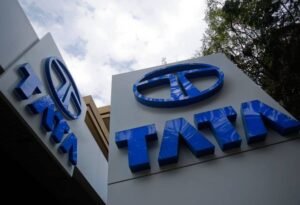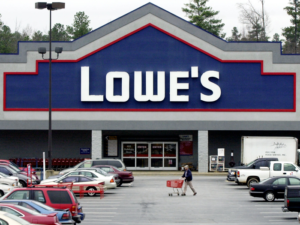“Implicit marketing is a type of market strategy that involves no explicit costs. It relies on consumers to associate the brand with whatever they seek, the product’s value, and their own needs. On the other hand, Explicit marketing is a type of marketing that deals with promoting products or services. It can be done through explicit advertising, which means directly telling customers about what you offer and how to buy it.”
Implicit and explicit marketing are two types of marketing. Implicit marketing is the term for “word of mouth” or “buzz.” Explicit marketing refers to any form that you pay someone else to do on your behalf, like advertising. So what’s the difference?

Jump Ahead To :
Understanding Explicit and Implicit Cost
explicit cost and implicit cost are two types of costs that can impact your financial plan. Both kinds of costs offer different challenges, but they must be evaluated to determine the total cost of starting or expanding a business.
What Is The Implicit Cost?
Implicit costs are a non-cash outlay that must be made to generate revenue. This can include things like property taxes, legal fees and administrative expenses.
It can also refer to an opportunity cost, the potential benefit (or profit) from alternative options available when making a purchase or investment decision. This will include any foregone benefits and lost opportunities due to choosing one course of action over another. The word “implicit” means not expressed but understood or implied. Implicit costs are generally overlooked when evaluating business decisions because they don’t require cash outlays when the decision is made. However, entrepreneurs and managers alike need to understand them to make smart choices about how much money should be allocated towards certain expenses and spending throughout their company.
Calculating Implicit Costs
Implicit Costs cannot be easily quantified but still represent the opportunity cost of doing something. There is not a specific tool or method for calculating implicit costs; instead, it requires you to use your judgement and experience to determine what they may be. Implicit costs usually occur when an activity causes some other activity (or things) to be forgone. A good example would be if somebody were taking on more work than usual at their job to earn extra income, resulting in less time for outside activities such as family life or hobbies, etc. This person might say that the additional workload was worth putting themselves under because it allowed them to earn extra money. Still, in doing so, they were also neglecting other things which could be considered implicit costs.
Examples Of Implicit Costs
To save money, many people choose not to eat at restaurants. The implicit cost of this decision is time because it takes longer and requires more effort for a person to cook food rather than going out and buying something already prepared.
Another example would be the financial implications associated with being overweight or obese in America. Healthy weight ranges can help individuals live healthier lives while saving them money on medical bills from health conditions such as diabetes or heart disease due to obesity.
Be aware that there are always hidden costs when making decisions about your life! Examples might include:
- Time spent cleaning up after cooking instead of eating out
- Medical Bills incurred from poor health choices like smoking cigarettes or choosing an unhealthy lifestyle versus the cost of gym memberships
- Taking out loans for college, which affects the future earning potential of an individual
The implicit cost of making quick decisions can lead to bad outcomes that are more expensive in the long term than if you had taken time to think about your best options. Examples might include not applying to enough colleges or buying a car instead of saving up money over several years so you could afford one with less interest attached.
Hidden costs exist everywhere! Be aware when they pop up, and always consider how much each decision will affect your life before blindly following through on them. People need to be responsible consumers who make thoughtful choices rather than impulsive ones. If we all took our time and thought things through, we would all benefit from better quality lives!

What Is An Explicit Cost?
Explicit costs are the ones that you can see and measure. Explicit costs might be salary, rent, electricity bill or other operational expenditures. An explicit cost is a direct result of carrying out an activity within your project’s plan. Explicit costs should always be included in every work package because there is no special treatment for these expenses regarding how they show up on timesheets and reports.
Rather than including all explicit costs in each activity’s budget, we recommend using a constraint to limit what each task includes so you don’t have too many line items listed under it. This way, project managers know exactly which activities will incur those expenses and where money has been allocated against them accordingly without hunting through their budgets looking for matching costs. Explicit costs are the first type of cost we will look at, and, as such, this article has been written to help you understand exactly what they are and how to calculate them properly.
Calculating Explicit Costs
Pricing is crucial for any business, but it’s much harder for startups to determine how much to charge customers. How do you know the price that will be profitable? How do you balance between charging too much and not enough?
Explicit costs are the money that is spent directly on a product or service. This can be done with simple math; for example, if you’re building an app and pay $100 to your developer per day every time he works on it, this will be considered one explicit cost. Explicit costs are also sometimes called accounting costs. They show us how much we have paid already but not yet earned back through sales of our products or services.
Explicit costs are easy to calculate and include:
- How many employees work on the project?
- How much do they get paid per hour?
- How much does it cost for rent, travel, equipment etc.?.
Why is this so important in today’s business world when we can use automation or outsource all of our tasks? Every day, I ask myself when my customers come back with a problem that could have been avoided if they had asked me questions about how things worked. Suppose you want to run your company well then. In that case, explicit costs need to be calculated and analyzed regularly. Any change such as hiring more people will make big differences in the company’s long-term costing structure. So don’t overlook this important part of the business.
Examples Of Explicit Costs
Examples of explicit cost are things that can be weighed, measured and valued. Examples could include the costs associated with paying employees or buying supplies for a business. Explicit costs can also refer to cash payments made by businesses directly to other companies or individuals – such as when making purchases from vendors. As long as there is not too much subjectivity involved in valuing something, it should fall under this category rather than being considered an implicit cost.
A classic example would be travel expenses. If you go on vacation and buy an airline ticket using your credit card, you will have expenses (the money spent on the plane ticket) and revenue (however much you spend during your trip). These two figures represent “explicit” costs and revenue.
Another example is depreciation, which can be considered the loss of value over time for a fixed asset such as a car or computer. In this instance, you have to keep track of the cost associated with buying an item – and then subtract that from its current market price when it has lost some amount of worth. If not cared for properly, this fixed asset may lose more value – further decreasing its resale value in future years. Examples like these demonstrate how explicit costs account for things that are measurable and quantifiable.

Explicit Cost and Implicit Cost (What’s The Difference ?)
Implicit costs are the opportunity costs that are not expressed in financial terms but rather in other ways, such as time or resources used to complete a task. This is often seen with people working for free when pursuing their interests or hobbies because they enjoy it and don’t value the money.
On the other hand, explicit costs are direct monetary expenses associated with an activity, which can be easily identified by keeping track of your budget if you were previously unaware of how much these activities cost you. From this information, one could make better decisions about spending their money next without overspending too much, which frequently happens among young adults who have limited budgets yet still want to go out every weekend.
When we see a product in the market, we compare it with other products and choose which one to buy. When comparing different products (e.g., cars), price is usually an important factor in making our decision. However, when deciding on how much money to spend, people focus more on the Implicit cost rather than Explicit cost because Implicit costs are paid out of pocket. In contrast, explicit costs can be tracked through receipts (Dolan & Metcalf 2008).
Explicit costs include direct payments or fees that occur at the time of purchase, such as taxes or shipping charges. In contrast, Implicit costs do not involve any expenditures. However, they may still require some amount of time/effort/money from consumers, including transportation costs, packaging, and wearing down the product by using it and waiting in line to make payment. Implicit costs are not easily measured, whereas explicit costs can be counted (Dolan & Metcalf 2008).
For example, if you buy a dress for $20 at an online store but have to pay a $12 shipping fee, your total purchase price is $32 ($20+$12), including implicit and explicit costs. Whereas if you go out shopping without buying anything, there will still be Implicit costs such as gas money spent driving around. However, these implicit costs cannot always be accurately tracked, so people usually ignore them when making decisions.
People tend to focus more on the Implicit cost than Explicit because Implicit costs are paid out of pocket. Implicit costs do not involve any expenditures but may still require some amount of time/effort/money from consumers, including transportation costs, packaging, wearing down the product by using it and waiting in line to make payment (Dolan & Metcalf 2008).
People often ignore Implicit costs while making decisions because Implicit costs can be tracked through receipts. In contrast, the explicit cost cannot always accurately be measured, so people usually ignore them when making decisions.
Relationship Between Explicit Cost and Implicit Cost
The relationship between implicit cost and explicit cost is that one can not exist without the other. Explicit costs are the money spent on salaries, equipment and materials required to operate a business. In contrast, implicit costs include an organizations opportunity for profit or loss when it comes to making choices about how something should be done. A good example would be buying $100 worth of pens, but we accidentally leave some in places where they might get lost, so we spend $150 because each pen costs us $25 more than what we originally paid. This means our total explicit cost was only 100$, but including the extra 25$ brings us up to 125$. Our total implicit costs were 150$. The difference between these two numbers is the implicit cost.
A positive relationship between these two concepts would be that the product becomes more expensive when we cut our costs and vice versa. This is because our companies explicit costs are not just limited to what they spend on materials such as salaries but also includes all of the other things, including the time that goes into creating a good or service for sale in their market at a reasonable price. When we improve how efficient this process is by cutting back on spending money, it increases revenue while decreasing expenses, which leads to an increase in profits, resulting in higher wages being paid out, etc. So there will always be some connection between these types of costs, even if one does take precedence over another depending on certain circumstances like who has access to information about how much it costs to make a product.
A negative relationship between these two concepts would be that the product becomes cheaper when we increase our explicit cost and vice versa. This occurs because there may not be enough demand for what we are selling to sell as many products at such a high price. So, by cutting back on spending money, you can lower your prices, resulting in more people wanting to buy from you, thus increasing revenue while decreasing expenses, which leads to an increase in profits, etc. This concept makes sense since if one increases their wage rates but does not invest any of those funds into hiring new workers or purchasing better equipment, they may lose some employees who might have been interested before due to getting paid more for their work.
Final Words
When considering a new business venture, it is important to evaluate the total cost of starting or expanding. This includes both explicit cost and implicit cost. Explicit costs are more easily understood in terms of dollars and cents, while implicit costs may be harder to quantify but still impact your financial plan. For businesses to succeed in today’s competitive environment, they must consider all types of expenses when determining if they can afford to go further with their idea.






